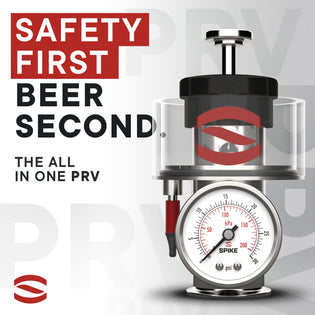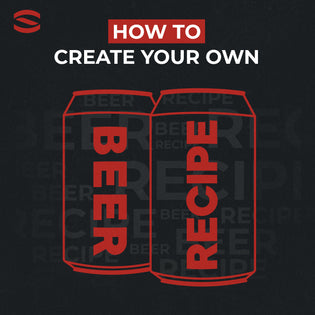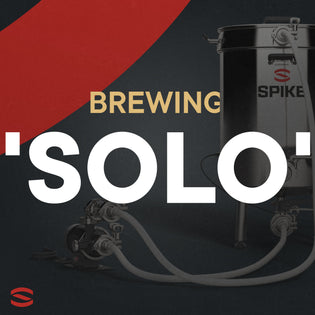By Matt Dailey
Hops! One of the four main ingredients in beer. It’s the “spice” that balances the sweetness of the malt. It’s not only a balance of bitterness in your beer, but hops can be used to be the flavor and aroma of your beer. Depending on the style or intentions of the brewer, hops can affect the beer dramatically. There are hundreds of varieties and several purposes of hops in brewing.
When it comes to hops, there is so much to talk about (and believe me, in time we’ll get to a lot of it!) but this blog will go into detail on the science behind hops and how that plays a role in using hop extracts. Let’s get into it…


Hop Combinations and Techniques for Creating Complex Beer Flavors
I like to compare coming up with hop combinations to cooking. You want your flavors to work together, not against each other. There are a lot of hops that have similar descriptors that I may shy away from pairing together. Many hop companies include hop descriptors on their website or packaging. One of my favorite Hop combos right now is Mosaic and Nelson Sauvin. The dank blueberry Mosaic pairs really well with the white grape and gooseberry you get from Nelson.
What I like to do is do ratios of hops. 2:1, 3:2, etc This means for every 2 oz of one hop I use 1 oz of another. So on and so forth. Typically, I do this in both the whirlpool and dry hop.
Pairing any hop with hops like Citra, Mosaic, and Simcoe are usually a success. There is no set-in-stone method here to pair hops. Beyond pairing descriptors and oil aromas it’s fairly experimental. It’s how breweries like Treehouse, Hill Farmstead, and Sapwood Cellars started. They found their favorite varieties and started pairing them with others. It’s worked for them and it’ll likely work for you, too.

The Science Of Hop Volatiles and How They Affect Beer Taste
Each hop contains alpha and beta acids as well as the following oils; Myrcene, Linalool, Caryphylle, Fornesene, Humulene, Co-Humulene, Geraniol, and B-Pinene.
Each one of those oils have distinct flavors and aromas when used at less than boiling temperatures. Boiling hops drive off these aromatic compounds so they’re best used under boiling temperatures keeping the oils in your wort or beer.
This following data was collected from Scott Janish.com (© Scott Janish 2014)

When you take this information and apply it to a whirlpool temperature schedule you’ll draw out a bouquet of flavors and aromas. From 185°-200°F you have a high end of whirlpool temps. You’ll still get bitterness here from oils and some flavors/aromas. Next is 160-170°F. In this range oils will mostly stay in solution and will not be lost to vaporization. This is where a lot of homebrewers do their whirlpooling. Final range is 150-160°F. In this range you won’t lose any hop oils at all but in order to make this viable you’ll need to increase your whirlpool times.
One interesting thing Janish mentions is that Beta-Acids can contribute to more oxidation and some bitterness. Oxidation is not a quality you want in beer so keeping beta-acids low can be beneficial. Alpha-acids are commonly advertised because they equate to IBUs but beta-acid levels will be available from hop suppliers too. The information above is available either on most suppliers websites or by request. It can be beneficial if you’re trying to target a specific flavor/aroma in beer. This information, along with hop descriptors, and a little bit of research could turn out to be beneficial when you’re planning your next beer.


Choosing The Right Hops for Your Beer Style
Choosing the right hops to your beer style requires a little research, unless you’re going to create a recipe of your own off the cuff. When I’m going to write a recipe, I research the style, history of the beer, and along the way find suggestions to use. Generally I’m a traditionalist when it comes to brewing old world beers. I enjoy the flavors and experience of them. Once in a great while I’ll create a beer, like an English mild, and put an American twist on it. English milds are traditionally made with English varieties so I’ll search for a hop that is nearly equivalent in alpha-acids to an East Kent Goldings or a Fuggle and I’ll substitute it.

If you’re like me and you’re a stickler for tradition, search a BJCP guideline on your chosen style. Look up some information of the hops that originate from that style's country of origin and go from there. You’ll find this to really help you understand different varieties and get a real feel for alpha-acids, characteristics, and flavors you get from your end result.
How to Match Hops with Malt and Yeast for A Balanced Beer Profile
Balancing all of your ingredients can be tricky! But it doesn’t have to be. Once again, if you’re really struggling on putting together a recipe, a great starting point is reading the BJCP guidelines. Good brewing software will have this incorporated into it so you can easily refer to it. That guideline will describe malt, hops, and yeast characteristics. What I really shoot for here is bitterness levels, color, and proper malt selection. I try to create my own recipe but again using traditional ingredients. If you stay within the realm of the guidelines you’ll make a great drinkable beer. There is also a possibility if you vary from the guidelines you might just create the next great beer trend.
The Best Times to Add Hops to the Boil for Maximum Flavor and Aroma
Depending on the style you’re brewing, you’re going to want to take a few things into consideration. Bittering? Flavor? Aroma? "There used to be thoughts in the brewing world that adding hops at the start of the boil (60 minutes left) and at 30 minutes in (30 minutes left) would impact just bittering. Around 30 minutes is flavor additions and anything between that point and the end of the boil would be aromatic additions.
First, will you be adding a bittering addition? For most beers this is a yes. In order to be effective here, you’re going to want to choose a solid bittering hop. Lets just say you already have a lager recipe that calls for 1.25oz of Hallertau Mittelfruh at 60 minutes. This addition, according to beersmith, is 18IBUs of 4.5% Alpha Acid(AA) Hallertau Mittelfruh. Now, this is where there will be disagreements…
Traditionalist lager brewers like myself would never substitute a new world hop for a noble hop like Hallertau, but it can be done. For example, you could add .38 ounces of 15%AA Warrior hops at 60 minutes to get the same 18IBU. Some people say you can taste the difference too. Nonetheless, you’ve got the same bittering level with the warrior as you did the Hallertau and you used way less hops. Brewers should utilize a brewing software to get the real understanding and feel of hop utilization.
As I mentioned before, in order to gain more flavor in beer you’ll want to add hops around the 30 minute mark. In order to achieve better aromas in your beer you’ll want to consider hops toward the end of the boil. It's always good to have some hops in any recipe at the end of the boil. It just accentuates the already added hops in the beer and really helps impart good aromatics and flavor to work alongside your malts. Remember, malts add sweetness. Hops do still add bitterness even at later stages in the boil, but not nearly as much as earlier additions.
There must be a balancing act. Typically when brewing an IPA, I want to taste the hops. The malt and the yeast play supporting roles, but as the name suggests, an IPA should have great hop character.

Hop Substitutions: When and How to Use Alternative Hop Varieties
You’ll often see hop substitutions listed if you’re looking at some recipes and even at times you’ll find a substitution chart. These substitutions are generally based on parental lineage of the hop variety you’re looking at. If not, they offer similar characteristics. One thing I generally look at is characteristics. If you’re wanting to substitute Czech Saaz in a Pilsner and happen to have Kazbek, you’re in luck. While that’s an obscure substitution, they offer incredibly similar spicy character. Really, substitutions are important if you’re trying to stay in a particular beer style. If you’re making a Czech Lager, you’re not going to use American Cascade. Although it’d be good, it wouldn’t be to style.
Now what you can do is pair it based on IBUs. I do this a lot when I am looking to change up a recipe when it comes to hop varieties. I know the style of Czech Pilsner has about 40IBUs in hop additions so I’ll manipulate my hop schedule to match 40IBUs with whatever hop I’m looking to swap out.

Understanding Hop Bitterness and How to Calculate IBUs
Calculating IBUs isn’t a common practice anymore as brewing software does it for us. It can be done easily, but oftentimes brewers today will just plug the data in. I will explain more on this calculation shortly.
Calculating this bitterness comes with the understanding of alpha-acids in hops. Alpha-acids indicate a potential bitterness of hops that will come out when boiled.
The Role of Alpha Acids in Hop BitternessAs discussed previously, alpha-acids retain bitterness and when boiled they isomerize in your beer. They become iso-alpha acids. This means the longer they boil, the more bitterness you draw out of them. Beers that have higher alpha-acids have more potential to be bitter. These iso-alpha acids translate to IBUs or International Bitterness Units. If you’re wondering if adding hops to your beer during whirlpool adds bitterness, it does. It adds some but not as much as a vigorous boil. Mostly because when you whirlpool, you’re doing it at much lower temps than a boil. You’re drawing out different oils, contributing great fruit flavors and aromatics to your beer!
How to Use Ibu Calculators and Tools to Achieve the Desired Hop Bitterness
Calculating IBUs is not something most people don’t calculate by hand anymore. Break out your abacus, because you’re gonna learn today! Take your total alpha-acids in the hops you’re adding to a beer. Let’s say you’re adding 85 alpha-acids total (add up alpha-acids in each hop addition) in all your boil additions. Multiply that by 5/7 and you get 60IBUs. In order to get the actual IBU of a beer you need fancy scientific equipment. This measurement only gives you approximate IBUs and is more than sufficient for homebrewing.
Hopefully it’s easy to understand now. If not, don’t worry. Most homebrewers rely on brewing software like BeerSmith or Brewfather to calculate it for us. Plug in your additions and you’re good to go! I highly recommend either of these softwares for use as they’re available on mobile and desktop so it’s handy to pull up on Brew Day.

Alternative Hop Products
In today's brewing world, alternative hop products are becoming increasingly popular. There are extracts, some of which have been used for quite a while in brewing. There are powders such as hop hash and while it isn’t a hop product, phantasm powder. Lastly, there are hop oils added that can be added to beer post fermentation.
Alternative Hop Products: Hop Extracts, Powders and Oils
So why is there a need for alternative hop products? It is no surprise that hops soak up precious wort and beer any time they’re added. More beer post fermentation means more beer for a brewery to sell. Even 10 years ago brewers started using extracts to bitter with. While this wasn’t exactly to yield more beer in the end it became about consistency. Brewers couldn’t always rely on their hops having the same alpha-acid or even flavors year after year. They turned to extracts. CO2 extracted hops were then added to the beer to make sure it tasted the same time after time. One advantage to extracts is that they don’t oxidize so their alpha-acids do not diminish over time like pellets or whole cone. Today hop growers and suppliers are revisiting the world of extracts but instead of a primary use in bittering they’re adding them to the dry hop.
Hop hash is a by-product of hop pelletization. What falls to the ground and off the pelletizing machine is harvested and according to some can be the best and most potent hop available today. It comes in chunks that are essentially stuck together hop debris and it’s wonderful in the dry hop! I recommend using it if you haven’t already. It’s usually only available for a short time following harvest season, so you may have to wait until fall to score some at this point.
Lupomax, Cryo Hop, and Lupulin Pellets are all pelletized hops but they have a higher concentration of lupulin to green matter. Typical pellets are 90% green matter and 10% lupulin. These concentrated pellets offer a different ratio of green to lupulin. While each brand varies their percentages one thing is constant. More oil overall in each pellet. Some touting 55% green matter and 45% oil content. This means more hoppy goodness in your beer. Typically these products are reserved for late additions, whirlpool, and dry hop. They’re offered in a myriad of varieties. I highly recommend them. I rarely use late additions, whirlpool, or dry hop of anything but concentrated pellets these days.
Another product that has become quite popular isn’t hops at all but dried sauvignon blanc grape skin powder. It’s called Phantasm and it drives a hop oil called thiol. Thiol is a compound that doesn’t even make up 1% of oil in hops but really offers intense fruit flavors. Phantasm is added during whirlpool or as a dry hop. When paired with a thiolized yeast strain and certain hops in the mash (yes you read that right, mash hops), like saaz or cascade, can bring out intense fruit flavors and aromas of white grape. This practice of using these two varieties in the mash brings out thiol precursors that carry over into the final product.
Much like hop extracts, hop oils have become popular because they increase brewing yields in the keg. They also add the same flavors and aromas as pellets so it’s not detrimental to your beer. They’re added during dry hop and can even biotransform if you’re looking to try something different in your hazy ipas. The process that creates these oils does so in a way that leaves you with organic hop oils and that don’t have any additives, so you’re getting all the flavors without vegetal matter.
The world of alternatives to traditional hop pellets has really been on the move in recent years. I recommend you check them out and experiment with your beers to see what works best.

 Final Thoughts
Final Thoughts
We’ve come a long way in studying acid and oil content in hops. These acids and oils offer different flavors and aromas to beer when added at particular times in the brewing process.
Calculating bitterness and pairing your hops with the right malt and yeast are important in creating a drinkable beer too. Software is helpful and style guidelines are available , if you wish to follow them. A lot of brewers are buying in bulk and if they’re not using them immediately, they must be stored properly in a freezer. Whole cone hops and pellets are not the only options for brewers anymore. Extracts, oils, and powders are available to choose from and they can enhance our beer and even yield more beer in your keg.
Brewing beer may sound really difficult but I promise, it’s like anything else you do. The more you practice it, the better you’ll get.
FAQs
Are there different varieties of hops?
There are many varieties of hops. Over 150 to be exact. Depending on where you want to use hops in your brewing process you’ll want to research whether they’re best for bittering,
What are the 4 noble hops?
Hallertau Mittelfruh, Saaz, Tettnanger, and Spalt are the four Noble Hops. They’re traditional European grown hops.
What kind of hops are in beer?
The hops found in beer are all female hops. Scientifically known as Humulus Lupulus. They produce lupulin that contains oils that give hops their flavor and bitterness.
What hops are best for bitterness?
There are lots of bittering varieties out there. Research some for yourself. Personally, I would find a good bittering variety and keep it on hand. I choose Columbus mostly because it’s a great bittering hop but also can be used late in the boil.
What type of hops are the most expensive?
Hop pricing can vary greatly. You may find a great deal on Citra for well under $1/ounce, but you may find Galaxy for $2/ounce. Citra is harvested in the U.S. while Galaxy is grown in Australia. The distance traveled to your supplier matters.
Also, alternative hop products are more expensive than their pelletized counterparts. This is due to the process and resources required to get them to their current state. You can expect to pay $1/gram or more on these alternative oils and extracts.

Matt Dailey lives in Titusville, Pennsylvania and is a high school emotional support teacher. He has a bachelor's degree in history from Southern Illinois University and a Masters in Special Education from Slippery Rock University. He and his wife have 2 boys, ages 4 and 1. If he’s not spending time with his family or brewing and the weather allows, you can find him on the golf course.





